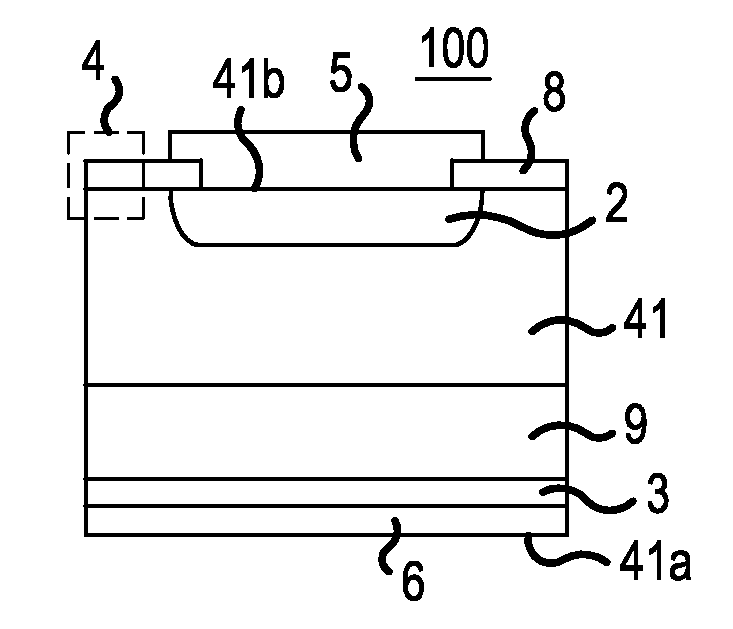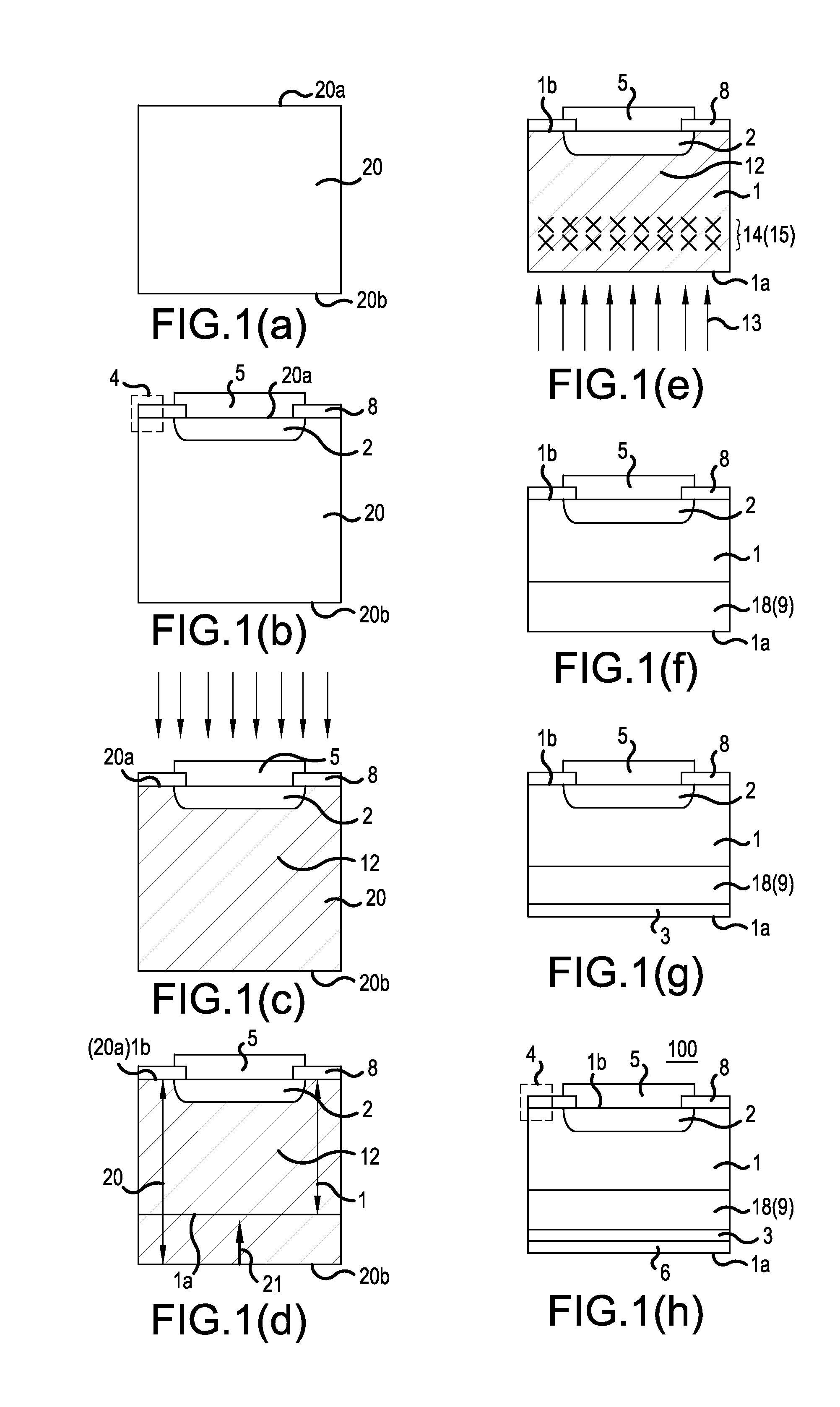Semiconductor device and method for producing semiconductor device
a semiconductor and semiconductor technology, applied in the direction of semiconductor devices, basic electric elements, electrical equipment, etc., can solve the problems of not disclosing a method of appropriately adjusting not disclosing a method of supplementing the amount of crystal defects to so as to improve the electrical characteristics, optimally control the amount of crystal defects, and increase the donor generation rate
- Summary
- Abstract
- Description
- Claims
- Application Information
AI Technical Summary
Benefits of technology
Problems solved by technology
Method used
Image
Examples
embodiment 1
[0048]FIG. 1 is a cross-sectional view illustrating the sequence of a production process according to Embodiment 1 of the invention. FIG. 2 is a flowchart illustrating the flow of the production process shown in FIG. 1. Next, a method for producing a semiconductor device according to Embodiment 1 will be described with reference to FIGS. 1 and 2. The semiconductor device manufactured (produced) by the semiconductor device production method according to Embodiment 1 shown in FIG. 1 is diode 100 including n-type field stop (FS) layer 9 illustrated in FIG. 1(h). First, for example, an n-type silicon substrate is prepared as thick n− semiconductor substrate 20 which is not thinned (FIG. 1(a)).
[0049]Then, as illustrated in the processes (1) and (2) of FIG. 2, p-type anode region 2 and anode electrode 5 (metal) which is electrically connected to p-type anode region 2 are formed on a first main surface (front surface 20a) of n− semiconductor substrate 20, which will be an n− drift layer, b...
embodiment 2
[0074]FIG. 8 is a characteristic diagram illustrating a difference in carrier concentration distribution when electron beam irradiation is performed and when no electron beam irradiation is performed. FIG. 8(a) is a diagram illustrating the comparison between an example according to the invention in which electron beam irradiation is performed (hereinafter, referred to as an example) and an example according to the related art in which no electron beam irradiation is performed (hereinafter, referred to as Conventional example 1). FIG. 8(b) is a diagram illustrating the comparison between an example in which no electron beam irradiation is performed and Rp2 is equal to or more than 0.5Rp1 (hereinafter, referred to as Conventional example 2) and an example in which no electron beam irradiation is performed and Rp2 is less than 0.5Rp1 (Conventional example 1). Here, Rp1 and Rp2 are proton implantation ranges and are average ranges from rear surface 1a of n− semiconductor substrate 1. T...
embodiment 3
[0079]FIG. 9 is a flowchart illustrating the flow of a semiconductor device production process according to Embodiment 3. The semiconductor device production method according to Embodiment 3 is a modification of the semiconductor device production method according to Embodiment 1 in which the order of processes before and after proton implantation is changed. The semiconductor device production method according to Embodiment 3 differs from the semiconductor device production method according to Embodiment 1 in that, after a rear surface of an n− semiconductor substrate is ground and before proton implantation, ion implantation for forming a cathode layer is performed and the cathode layer is activated by laser annealing. The other processes in the semiconductor device production method according to Embodiment 3 are the same as those in the semiconductor device production method according to Embodiment 1.
[0080]Specifically, first, similarly to Embodiment 1, a surface forming process ...
PUM
 Login to View More
Login to View More Abstract
Description
Claims
Application Information
 Login to View More
Login to View More - R&D
- Intellectual Property
- Life Sciences
- Materials
- Tech Scout
- Unparalleled Data Quality
- Higher Quality Content
- 60% Fewer Hallucinations
Browse by: Latest US Patents, China's latest patents, Technical Efficacy Thesaurus, Application Domain, Technology Topic, Popular Technical Reports.
© 2025 PatSnap. All rights reserved.Legal|Privacy policy|Modern Slavery Act Transparency Statement|Sitemap|About US| Contact US: help@patsnap.com



